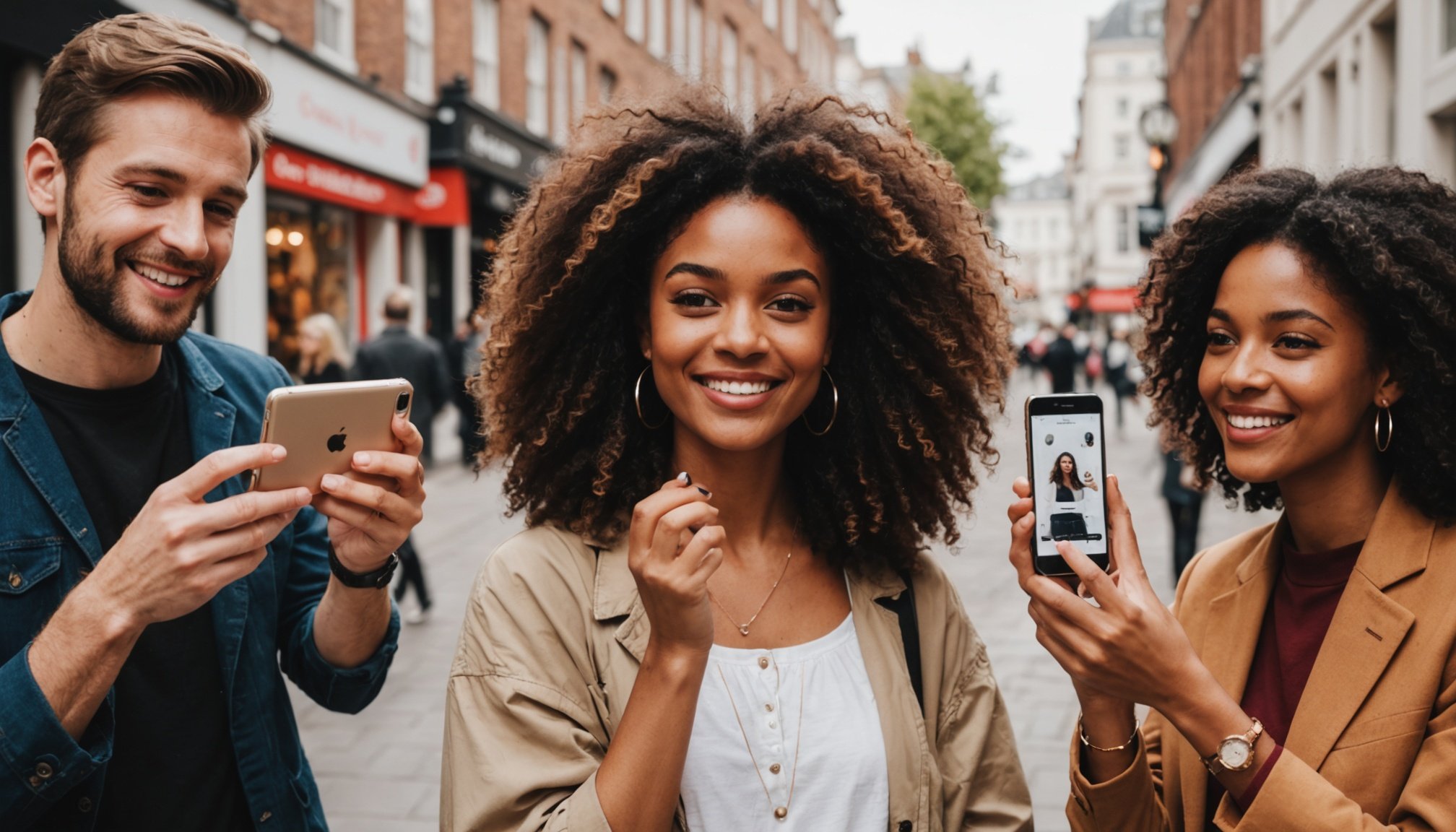Understanding User-Generated Content in the Beauty Sector
User-generated content (UGC) refers to material created by consumers rather than brands. This type of content plays a crucial role in beauty marketing strategies due to its authenticity and relatability. UGC can take various forms, including reviews, social media posts, and videos, offering a platform for real users to express their genuine experiences with products.
In contrast, traditional marketing is usually brand-centric, where brands create and control messaging through advertisements. This makes UGC distinct because it is perceived as more genuine, often leading to increased trust and engagement from potential customers.
Also to read : Revving up revenue: how vr showrooms are transforming car sales in uk dealerships
Current trends in user-generated content within the beauty industry reveal that users are increasingly inclined to share their product experiences and beauty routines online. Platforms such as Instagram and TikTok see large volumes of beauty-related UGC, effectively turning users into brand ambassadors. This content often drives purchase decisions, as potential customers rely on these shared experiences to form opinions on products.
Integrating UGC into beauty marketing strategies not only enhances brand transparency but also builds a stronger connection with the audience. By acknowledging user contributions, beauty brands can foster a sense of community and loyalty among consumers.
Also to read : Top strategies for uk companies to protect data integrity in the cloud
Benefits of User-Generated Content for UK Beauty Brands
User-Generated Content (UGC) has become an essential tool for UK beauty brands by enhancing brand authenticity and fostering consumer trust. In an age where consumers are more sceptical of traditional advertising, UGC offers a genuine glimpse into the experiences of everyday users. When customers see real people sharing their honest opinions and showcasing the products, it builds credibility and reinforces trust.
Moreover, UGC boosts engagement by offering relatable and diverse content that resonates with a broader audience. Beauty enthusiasts and casual consumers alike are encouraged to interact by liking, commenting, or sharing posts that showcase the brand’s products in everyday scenarios. This interaction not only keeps the audience engaged but also highlights the brand’s commitment to inclusivity and diversity.
Additionally, UGC contributes to building a vibrant sense of community among consumers. When customers feel like they’re part of a community, their emotional investment in the brand increases. They are more likely to demonstrate consumer loyalty, making repeated purchases and recommending products to others.
By promoting these organic connections through user-generated content, beauty brands can leverage the power of community to cultivate a loyal customer base and attract new patrons.
Effective Tactics for Leveraging UGC
Utilising UGC strategies involves harnessing user-generated content to create powerful and authentic connections with your audience. To maximise your efforts, consider crafting branded campaigns that inspire your customers to share their experiences with your product. This not only boosts authenticity but also extends your reach as customers become brand advocates.
Engagement on social media platforms plays a crucial role in these campaigns. By strategically selecting platforms where your audience is most active, you can collect a diverse range of user-generated content. Encourage participation by launching hashtag contests or photo challenges that resonate with your community, motivating them to contribute their stories and images.
For a more extensive impact, collaborate with influencers who align with your brand values. These partnerships can amplify your reach and lend credibility to your campaign. Influencers can introduce your product to a broader audience and foster trust among potential customers, making their endorsements highly valuable.
By implementing these UGC strategies, brands can effectively enhance their social media engagement, fostering deeper connections with their audience and driving increased visibility and authenticity in their campaigns.
Success Stories: UK Beauty Brands Excelling with UGC
User-generated content (UGC) is a powerful tool for growth in the UK beauty industry, allowing brands to connect authentically with audiences.
Brand A: Strategy and Execution
Brand A harnessed an innovative strategy by integrating case studies into their marketing. By utilising customer testimonials and images, they crafted successful campaigns that resonated well with their audience. These UGC materials not only showcased the effectiveness of their products but also built trust. Metrics of success included increased engagement rates and higher sales conversions, demonstrating how authentic consumer stories can elevate a brand’s presence.
Brand B: Innovative UGC Campaigns
Brand B took a bold step with their user-generated content, leveraging inspired campaigns that motivated customers to share personal experiences. Their approach was rooted in creativity, leading to memorable and successful campaigns. Through strategic hashtag challenges and interactive content, Brand B saw a rise in community participation. This engagement was measured through lift in brand mentions and customer feedback, showcasing the impact of innovative UGC.
Brand C: Community Involvement and Engagement
Community involvement for Brand C meant creating spaces for customer interaction. This strategy allowed them to foster a loyal community deeply engaged with the brand. By inviting users to share content through contests, Brand C saw significant success in engagement metrics. These metrics highlighted the value of creating spaces for open dialogue and community-driven content, as found in these compelling case studies.
Practical Tips for Implementing UGC
Implementing UGC (User-Generated Content) effectively requires strategic planning and engagement. To start, it’s crucial to develop clear guidelines for user submissions. These guidelines should specify the type, style, and quality of content desired, ensuring consistency and aligning with brand values. Clear instructions help users feel confident in their contributions.
Encouraging participation through rewards and recognitions can significantly boost engagement. Consider offering incentives such as discounts, exclusive access, or public acknowledgment to motivate users. Recognitions, like featuring user content on official platforms, can also enhance their sense of involvement and loyalty.
Once collected, showcasing UGC prominently on websites and marketing materials is vital. This can include displaying user photos, testimonials, or stories on a dedicated section of your site. By integrating UGC into your marketing campaigns, you not only validate users’ experiences but also encourage others to participate, creating a cycle of engagement and trust.
By following these strategies, UGC implementation becomes more seamless, fostering a vibrant community that actively contributes to and enhances your brand narrative.
Legal Considerations in Using UGC
Navigating copyright laws relating to User-Generated Content (UGC) is crucial for anyone utilizing content from creators. These laws protect creators’ rights, preventing unauthorized use of their original works. Understanding copyright is paramount as it delineates the legal framework protecting UGC from infringement. Failure to respect these laws can lead to significant legal repercussions.
Securing necessary permissions from content creators is a mandatory step in using UGC ethically. This process often involves obtaining express consent from creators, recognising their ownership, and respecting their creative rights. Permissions can vary depending on the intended use of the content, thereby emphasising the need for transparent communication.
Implementing best practices for UGC usage ensures ethical and legal compliance. Firstly, always credit the original creators, demonstrating respect for their efforts and rights. Secondly, ensure transparent interaction by openly discussing usage intentions and potential implications with the creator. Lastly, maintain a robust documentation process for all obtained permissions, safeguarding against potential legal issues.
Regulations surrounding user-generated content can be intricate but abiding by copyright laws, securing permissions, and following best practices can promote a respectful, legally sound approach to UGC.
Measuring the Success of UGC Initiatives
Understanding success measurement for user-generated content (UGC) initiatives is crucial for optimising campaigns. It requires focus on specific UGC metrics that indicate performance and growth.
Key performance indicators (KPIs) are essential for evaluating UGC campaigns. These include metrics such as the number of users contributing content, the volume of content generated, and engagement rates. Engagement rates encompass likes, shares, and comments, providing insights into how effectively the content resonates with the audience. Also, monitoring the conversion rate is vital, as it reflects the percentage of users who take a desired action after interacting with UGC.
To analyse these indicators effectively, various analytics tools can be employed. For instance, platforms like Google Analytics offer detailed insights into user behaviour and conversion tracking. Social media channels also have built-in analytics to assess engagement and reach of UGC. It’s essential to regularly track these metrics across different platforms to gauge overall performance.
In the digital age, using the right metrics and tools can drive informed decisions for enhancing UGC campaigns. Understanding engagement and conversion not only measures success but also provides a pathway for continuous improvement.
Tools and Platforms for Collecting UGC
To effectively gather User-Generated Content (UGC), brands must leverage suitable collection tools and UGC platforms. With the growth in digital technology, several technology solutions have emerged to simplify this process.
Overview of Popular Tools
There are diverse platforms available for aggregating UGC, each designed to meet specific needs. Some popular options include Taggbox and CrowdRiff, which streamline the collection and curation of social media content. These platforms are equipped with features that allow businesses to track hashtags and mentions, tapping into organic content from consumers. Additionally, Stackla uses artificial intelligence to find, curate, and manage UGC effectively.
Comparison for UK Beauty Brands
For UK beauty brands, platforms like Olapic and Tint are particularly advantageous. They offer tailored solutions to align with brand aesthetics and customer engagement strategies. Tint is known for its ability to embed UGC into various digital touchpoints, which enhances marketing campaigns.
Integration into Existing Strategies
Integrating UGC collection into marketing strategies involves ensuring that the chosen technology solutions are compatible with existing systems. Tools like Curalate and Pixlee facilitate seamless integration by offering API compatibility, making it easier to incorporate UGC into broader marketing efforts. These solutions help brands develop a community-centric approach, leveraging consumer trust.











